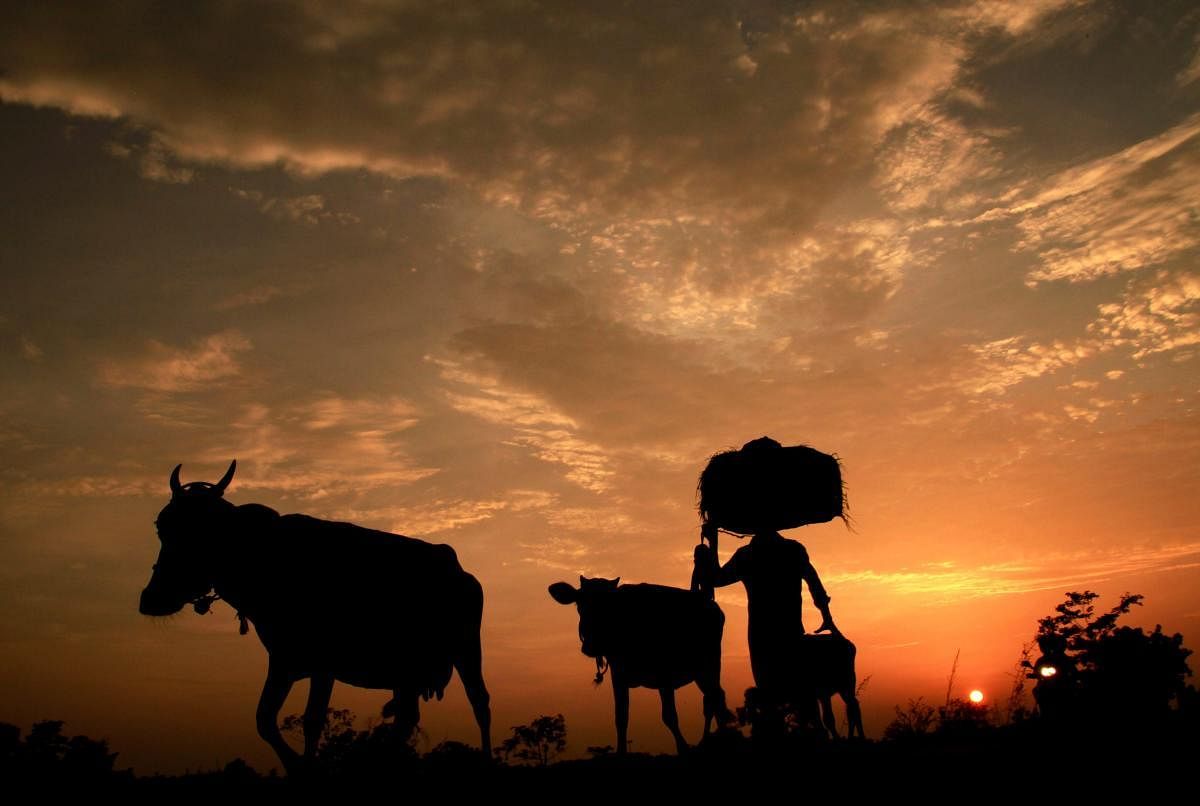
The Centre’s reiteration that the minimum support price (MSP) for farmers will be fixed at 150% of the cost of cultivation is welcome. We should hope that this goes a long way in mitigating the chronic and varied distress the average farmer is undergoing; and that the mechanism therefore will be designed to be fool-proof and operationalised with expeditious allocations.
Farm incomes in India are relatively retrogressive. Compared to incomes in industry, service and in urban areas, income from agriculture is low; particularly, that from farm labour is proportionately declining. The proportion of farm workers’ income to that of non-farm workers has been low and declining.
In 1971, it was hardly 0.261, and further declined to 0.181 in 2011. This means that if a non-farm worker got Rs 1,000, a farm worker got only Rs 261 in 1971, and Rs 181 in 2011. This structural decline in incomes is behind the youth exodus from agriculture and rural areas. This is accompanied by a steady decline in the proportion of agriculture in the national GDP, total economic produce: this was 39.7% in 1971, declined to 29.5% in 1991 and further to 11.3% in 2011.
The proportion of agricultural workforce, farmers as well as landless labourers was 69.8% in 1971, declined to 64.9% in 1991 and further to 54.6% in 2011. Or, people dependent on agriculture continue to be very large in number, despite a proportionate decline, and have been distressed by ever-declining income share. The huge growth in population has added to this income distress.
The migration of rural youth to towns and cities may be welcome, but the income of these migrants does not witness significant increase because returns and employment in non-agriculture are not rising as expected; higher level skills are required and automation/robotisation is coming into vogue, affecting labour absorption. Combined with rising inequality of incomes and wealth, despite this migration, poverty, insecurity, drift into crime, systemic anonymity and lack of the sense of belonging do not seem to diminish.
Socially, economically and politically, agriculture is far more crucial than its sheer proportion of yield indicates. Agricultural prowess is an intrinsic bulwark against international shocks like wars, food scarcity, climate contingencies, currency turmoil and the all too uncertain capricious sanctions and counter sanctions. It is central to any programme of credible fight against poverty; and it is an obvious conduit to reach real material incomes to the poorest and people living in the nooks and crevices of Indian society.
Support prices and various subsidies in the agricultural sector should be more imaginative and immunised against considerations of fiscal deficit and urban price rise; the middle classes in urban professions have to be persuaded about the rationale behind official succour to the poor in the agricultural sector, factoring this into general inflation dynamics. The cost-benefit considerations familiar in economic management cannot be straitjacketed in agriculture, particularly when rural poverty is proving to be structurally and systemically difficult.
Core issues
Over and above all these political economy considerations regarding agriculture, the issue of enhancing diversification, productivity and production in agriculture remains as these are inevitable contributors to rural employment and physical incomes. India’s arable land amounts to 155 million hectares and, of this, only 43% is irrigated.
There are serious limits to expand assured irrigation in the country, what with loss of forests, environmental degradation and low availability of fresh water — 4% of the world’s fresh water resources sustaining 17% of the world’s population — and relatively increasing demand from industry, urban areas, sewage management and general domestic use.
The long-proposed interlinking of rivers is beset with several insuperable chronic political, economic and environmental problems. And agronomists have been suggesting economy in irrigation use and resorting instead to dry-land farming and choice of crops requiring low irrigation — vegetables, fruits, millets, oil seeds and pulses. This change in the pattern of crops will surely enhance soil fertility or land productivity; labour absorption in agriculture; nutrition of villagers and urbanites, children and women, and of livestock due to diversity of fodder availability.
Land productivity has to increase by levelling in accordance with micro topographic possibilities and, of course, greening of fallow land and hill slopes suitably; the use of green and dung manure is sure to enhance this productivity. In addition, irrigation productivity also has to be emphasised.
Recent NABARD sponsored studies indicate that in Punjab, 0.22 kg of rice is produced using 1,000 litres of water whereas in Jharkhand and Chhattisgarh, respectively, 0.75 and 0.68 kg are produced for the same amount of water. This should set the authorities, agronomists, planners and government thinking about putting available irrigation water to best or optimum use, as well as reaching irrigation to various regions and drawing up a proper mix of crops to be produced in different regions and sub-regions of India.
(The writer is a former professor of Maharaja’s College, University of Mysore)